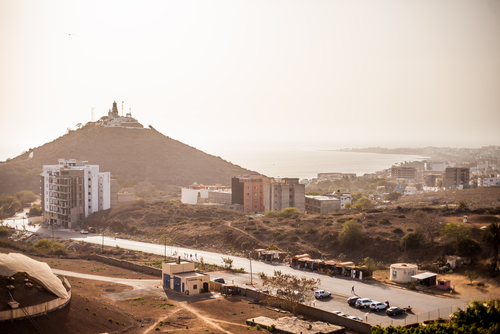Last updated on March 3rd, 2020
Senegal, officially the Republic of Senegal, is a country in West Africa. It occupies an area of 196,722 square km. Dakar is its capital and largest city. French is the official language of Senegal. Its official currency is West African CFA franc (XOF). Its five bordering countries are Gambia, Guinea, Guinea-Bissau, Mali, and Mauritania. Senegal also shares a maritime border with Cape Verde. The country is known for its vibrant, colorful and elegant life. With these 39 facts about Senegal; let’s explore more about its: history, culture, traditions, people, economy, tourism, the Senegal River and more.
Facts about Senegal’s history
1. In the 16th century when the Portuguese visited the country’s coast, the fishermen said “sunu gaal”, which translates into “these are our boats”. The Portuguese, who understood nothing, simply named their land “Senegal”. Classic colonizers!!
2. The European powers that engulfed much of Senegal’s history are the French, Portuguese and the British. The French had their presence way back in the 15th century, at the port of St.-Louis. They left the country in August 1960.
3. Senegal’s location towards the west coast made it a hub for the international slave trade of the 18th and 19th century. Gorée Island, in particular, became a major transit point of the Atlantic Slave Trade.
4. In the 17th and 18th century, the world knew Senegal for three things; slaves, ivory, and gold. These things attracted not only traders but also many pirates of class and repute.
5. The House of Slaves and its iconic “Door of No Return” is a melancholic reminder of Senegal’s tryst with the slave trade history.
6. In contemporary times, Senegal is very close to France. In fact, the very flag of Senegal has adopted the French Tricolore style. So the flags of both look the same, except for the color.
7. Senegal merged with Gambia, to form Senegambia in 1982. But apart from the unification of the names, nothing else changed much. The two countries still maintain border and neither care to unify with the other.
8. Senegal is the only country in West Africa which wasn’t overrun by a military coup. Its democratic stability has earned it many allies in Europe and the Americas.

9. The capital of Senegal is the port city of Dakar. Its history has shaped it to be one of the most liberal and cosmopolitan cities of Africa.
10. The Place de l’Obélisque is the nerve center of the whole country. It is the central plaza of Dakar and all the important moments of Senegal’s modern history passed through here.
Facts about the Senegalese, their culture, and tradition
11. Senegal was a pivot for The Negritude, which was a literary movement in the 1930’s-1950s. Born in Paris, it had many notable Senegalese people who later spearheaded the decolonization of Africa.
Flag of Senegal

12. Senegal’s national flag bears three colors; red, yellow and green. They are the official Pan-African colors and a star at the middle represents universal unity.
13. In Senegal, taxis have tails. Yes, an artificial tail made of goat or sheep hair and it supposedly brings good luck.
14. Senegal, being a Muslim country, takes its sacrifices very seriously. The Tabaski or Eid al-Adha is a time when sheep and goats sell like hot cakes when every family wants an animal to sacrifice. Not a great time for PETA to be in town.
15. The sheep have the time of their life when they are alive. Every Sunday on Dakar’s Yoff Beach, you can find hordes of sheep enjoying their Sunday afternoon spa and bath in the warm tropical waters of the Atlantic. It’s a tradition to take care of your sheep in Senegal.
16. In fact, the most popular TV show in Senegal is about……. you guessed it right! The humble sheep. Khar Bii, a show with five full seasons, displaying the best sheep in all of Senegal.
17. Griots are the traditional storytellers, singers, poets, musicians, and oral historians. They have been known for their skills oratory and lyrical mastery. Basically, griots are the original father of rap music.
18. The Senegalese coast was the filming backyard of the French movie industry. From 1960 to 1970, Senegal saw a film industry saw a mini-renaissance.
19. Senegal’s French connection has improved its movie-industry drastically. The Black Girl (1966), is the first Sub-Saharan African film by an African filmmaker to compete with the global cinema standards.
20. “Borom Sarret”, also known as The Wagoner, is a film often considered the first movie ever made in Africa by a Black African and was filmed in Senegal in 1963.
. . . continue reading on the next page.
